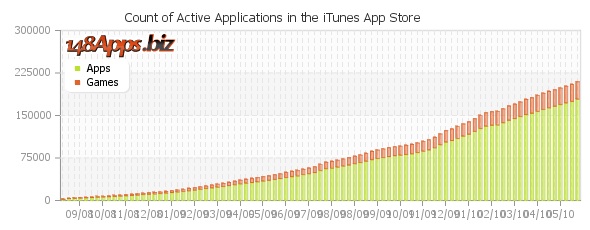In what is becoming an increasingly regular occurrence of late, Apple changed its mind regarding publishing a list of rules for applications to be submitted to the App Store. Some have seen it as bowing to developer and possibly even government pressure (the FCC investigation that started out of the Google Voice rejection mid 2009 may have contributed — but we can’t be sure). Either way, now a list of “rules” exist with some highly emotively-worded statements. More on that later.
Since its inception the App Store has been lauded by Apple, mostly for its numbers. With every keynote or public speaking opportunity Apple executives including Steve Jobs, Phil Schiller and Scott Forestall would make a point of mentioning the number of apps in the store as it rocketed ever higher and ever faster with no immediate end in sight.
Some pundits have speculated that the App Store has become the Crap Store where the number of apps that crash excessively or perform little useful function outnumber the well-designed and well-thought-out apps. Indeed this appears to be Apple’s own opinion now to some extent with this line barely halfway down the first page of the App Guidelines: “We have over 250,000 apps in the App Store. We don’t need any more Fart apps. If your app doesn’t do something useful or provide some form of lasting entertainment, it may not be accepted.”
On the surface that seems fair enough, but does such a position stifle competition? Surely in an open marketplace the best product would (or should) win in the end due to its features and quality? Let’s say there are 100 fart Apps but then only a few will be regularly downloaded and supposedly then only the best, surely?
We know that Apps that sell well in the first week or two of release tend to develop a critical mass of user reviews and downloads, which puts them into the Top 100 or even Top 10 lists in their category (Utilities, Games etc) or even overall. This visibility extends their popularity significantly leading to better overall sales. For new App developers wishing to enter the market it’s a big problem trying to get that momentum to stay in the charts and compete with other similar Apps. So if a certain class of App (like Fart apps, I suppose is as good an example as any) has some critical number of Apps for sale, will Apple just draw a line and say, “That’s it — no more fart apps”? It certainly looks like it’s intending to do just that.
So the argument begins — my fart app has a knobby/flicky button here that isn’t on that guys fart app which makes mine better. Acceptable or not? Before long this becomes impossible to police. If there are 100 fart apps (I stopped counting at 100 by the way when I searched the App Store — there are lots more) is any one reviewer at Apple going to be able to tell the subtle differences between each of them and a new submission? It’s unlikely. Does that mean there will be uncategorical rejections based on the App Class?
If so, it means no new developer will be able to submit a new app in an established class and, hence, the developers that were there first will be the only ones in the game.
Forget fart apps for a moment. There are plenty of other App classes such as clocks, calculators, planners that also have an abundance of Apps in them. If Apple does indeed start capping the numbers, then clearly the size of the App Store is no longer what it wants to achieve. Unfortunately, improving the quality of what’s in the App Store already is difficult without developer backlash — as the removal of “widget-like” Apps a few months ago proved.

So if you can’t clean out the garbage, you leave it in the Store and stop new ideas coming into established App classes? Seems to be a little counter-productive. Therefore, where is the incentive for a new App developer to enter into the App Store, if their app won’t be approved since there are already too many Apps like it?
The App Store risks becoming a group of existing Apps with few updates made by the same developers with little new blood and stale Apps in another year or so. So the App Store, which (until now at least) has always been about quantity, has suddenly become all about quality. It only took three years to go from no platform, to huge platform, to what may need a huge platform-wide App garbage collection.
Instead of focussing on what can and can’t be allowed into the Store, Apple should direct its energies into better search and categorisation techniques in the App Store and improve the customer experience to find the right App for them. If they don’t, the Store may become an even more polar opposite to an open marketplace, and its slide downwards might be as quick as its ascent. Original edited by Matthew JC Powell.